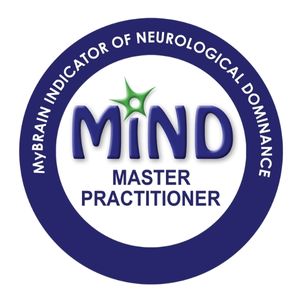Hello everybody. I’m Victoria Rennoldson, Communication and Culture Coach, and welcome to Wednesday Words with me. You can choose to watch this by clicking ‘play’ on the video above, which also has subtitles.
Or, because I know that many of you, just like me, like to listen to podcasts when you’re out and about, you can listen to the audio only version, by clicking below:
Finally, you can also read the blog as well, right here below.
In today’s Wednesday Words, we’re going to be talking about body language, and I came across some fascinating statistics recently. I read that the most popular TED talk speakers use twice as many hand gestures as the least popular TED talks.
I also read that there was a study that looked into the impact of your message and how hand gestures can add a 60% incremental factor to your impact. Again, that said to me there was something very important about body language and hand gestures.
I’m sure you’re aware that you use body language, but are you aware how you use it?
What are you doing with your body?
And have you ever stopped to think about how it works in person, compared to virtually?
I’m sure that you realise in writing you can use lots of different types of techniques when it comes to emphasising what it is you want to say- we have bold, italics, underlining, and all sorts of different techniques to do with font size, type and colour, let alone all the other formatting options, and we don’t have this visible effect when it comes to our spoken communication.
However, body language is sort of like this, it’s like the visual element, the way to help emphasise and underline our key words, so that our message comes across in the way that we want it, and it can have great impact on the people who are listening to us, whether it’s a meeting, a presentation; whether it’s virtual or in person.
How do we use our body language?
What is important to bear in mind?
Today I will talk about this and how this varies between in-person and virtual meetings.
The first thing to consider is that body language is incredibly personal. We all have our own individual ways of doing it, and there will be certain gestures that we use, certain ways that we express ourselves, which are particular to us. So today is about general principles.
The other critical part of this is to think about body language at different levels. If you imagine it having a ‘volume’ dial, then you can turn the volume up and down. You can be conscious in increasing the level of your body language and decreasing it.
This might be significant, because certain cultures demonstrate very little body language, compared to other cultures, which usually show a high level of body language, and you may need to find the balance that works for you with the culture that you’re working with. I would say that for English speaking cultures, the right pitch we’re going for is expressive, and finding ways to really emphasise our key points, without getting too dramatic. And what do I mean by dramatic? Well, dramatic would be waving my arms up in the air above my head, or out the sides where you can’t see them in the virtual space. We need to think about what is the right balance for the people we’re communicating with.
In body language, I like to consider the whole body, and I’m somebody who likes to stand, but you don’t have to stand, clearly there will be meetings where you’ll be sitting down, but we can convey a lot by our total body, about our energy, our dynamism, and how we feel about the particular topic of communication. So make sure, whether you’re standing or sitting, that you communicate the energy, and how you feel about this topic, and there are many different ways that we can do this. We can move our bodies slightly, obviously we don’t want to make too dramatic movements, we’re not actors, but we do want to kind of have some level of movement there. You might notice that people lean in when they’re listening very carefully to what you have to say. They also might lean in when they’re saying something which is incredibly important, and they really want to emphasise it.
If you’re standing at an in-person event, then the way your body looks attracts attention, so make sure you’re standing or sitting up nice and tall. That you are feeling nice and strong in your body – you’re not slouching or showing closed body language. There’s lots of research that says having closed body language gives off not very confident messages. That means to create confidence, to show energy, make sure you’re standing up nice and strong, with your shoulders back and your chest out.
Now let’s talk about the eyes. So, with eye contact, let’s first of all talk about in-person events. Let’s imagine I’m presenting to a room, and I would make sure that I was looking around the room occasionally, and making eye contact with individuals. The important part here is that we do this naturally, so we do this in a slightly random way, rather than looking from person to person in turn. In the virtual space, what you often will see me doing is talking to the camera, as I feel you want to feel like I’m talking to you. And that’s a great way to connect through your communication.
However, I don’t just do eye contact. Occasionally I’m looking away, maybe thinking about what I want to say next, or even referring to my notes sometimes, and that’s natural, and works well because again, it’s making sure that you’re communicating at a very human level.
The next point is about the smile, and I think smiling is so important. Whether you feel happy that day, whether you’re feeling confident or not, if you put a smile on your face, you will start to feel much better inside yourself, and it builds connections incredibly well with others. It is great to put a smile on, even if you’re not feeling it inside, yet.
And finally, let’s talk about hand gestures. Now, this is an interesting question – are hand gestures good or bad? Well, it comes down to finding the right level for you, and making sure that, if you use hand gestures, you use them appropriately, and you know how to use them in a way which is expressive, but not overly dramatic.
Just a couple of tips, in terms of thinking about the virtual space and hand gestures. If I was at in-person event, I would normally have my hand gestures a bit further down, sort of by my chest and lower, but of course in the virtual space, I’m much closer in, and what I have to do with my hands is to bring them up so you can see them.
The second tip for hand gestures in the virtual space, is that you might need to turn the volume up. We talked about the volume dial earlier, and finding the right level for you. I noticed that during lockdowns, my body language was much more expressive, and slightly more exaggerated in this rectangle of the virtual space, than it was in person. I noticed this when I went to an in-person event at the end of last year, and I hadn’t been at one for a while, and it made me laugh to realise my body language had become more exaggerated. So consider this, you might need to use more body language in the virtual space than you’re used to, just to create the same level of impact.




